|
October 2020
 Hello Neighbors!
It’s that special time of year when you get to make your voice heard by voting. In the next week, you should receive your ballot by mail from the Clark County Elections Department. You have several ways to vote this year:
1) mail your ballot by USPS (must be postmarked by 11/3)
2) drop your ballot at one of dozens of drop-off sites now through Election Day (11/3)
3) vote early and in person at one of 35 sites from 10/17-10/30
OR
4) vote in person at one of 125 sites on Election Day (11/3).
We’ll also be hosting ballot drop-off events during early voting (see info below). If you have any questions voting, please visit the Clark County Election Department or contact my office at ccdistf@clarkcountynv.gov or (702) 455-3500.
As always, please feel free to with any questions or concerns. You can also follow me @JustinJonesNV on Twitter, Facebook and Instagram to keep up with the latest events in the District.
 "I can't thank you enough for your service and especially for helping to reach out to Clark County Elections Department. I heard back within 20 minutes of my original email to your office. I really appreciate your help with this matter." - Scott, District F Resident
"Since January, an abandoned vehicle has been outside my home. They finally towed away the car the day I spoke with Jayson. Now, I'm able to keep the front of my house clean. Thank you!" - John, District F Resident
Constituent services are something #TeamJones takes very seriously. We want to ensure District F residents can come to us with any County issue or concern.
- Are you having issues with street lights, potholes, broken signs, abandoned cars, floods, sidewalks, and more? We’re here to serve you!
- Are you having issues with public parks, whether lights are off or there’s issues with the maintenance? We’re happy to help.
- Do you know someone in #DistrictF who's actions deserve recognition? Let us know!
- Need help with a federal agency like VA, Social Security, IRS, and more? We can direct you to our Federal Delegation.
Please feel free to contact Commissioner Jones’ Office at 702-455-3500 or email us at ccdistf@clarkcountynv.gov
|
|

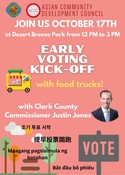 |
|
Join Commissioner Jones and the Asian Community Development Council for our Early Voting Kick-Off and Ballot Drop Off at Desert Breeze Park! The event will be held from 12 noon to 3 pm on Saturday, October 17th. Not only will this be a great opportunity for voters to drop their ballots in secure boxes provided by the Clark County Election Department, there will also be food trucks, music, and more! Social distancing will be practiced during the event along with mandatory mask-wearing. For more information click on the flyer to the left. |
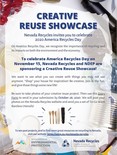 |
|
As part of their mission to foster a "greener" Nevada, the Nevada Division of Environmental Protection’s Recycling Program is excited to promote awareness about the importance of recycling and reusing through this year’s "Creative Reuse Showcase" statewide art show. To participate, simply make an artistic creation using things you may not use anymore and submit your sustainable show of imagination through our online entry form at NevadaRecycles.nv.gov by October 28, 2020. |
This artistic exhibit is being conducted in celebration of America Recycles Day, which is Sunday, November 15. For more information about the exhibit, submission guidelines, and to see past submitted projects visit NevadaRecycles.nv.gov.
|
|

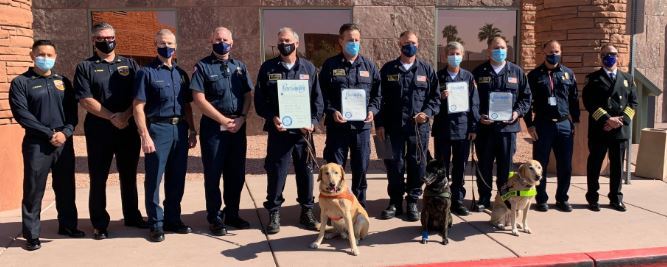 Nevada Task Force 1 (NVTF-1) is one of 28 FEMA Urban Search and Rescue Task Forces that are prepared to respond to state or federal disasters throughout the United States. These task force teams can be deployed by FEMA for the rescue of victims of structural collapses due to man-made or natural disasters. Nevada Task Force 1 is sponsored by the Clark County Fire Department and has members from Las Vegas Fire & Rescue, Henderson Fire Department, North Las Vegas Fire Department, and the Las Vegas Metropolitan Police Department.
Last month, NVTF-1 deployed a 5-member search and rescue team, an engineer, a structural specialist, and 3 specially trained dogs to assist with the fires in and around Salem, Oregon. At the October 6th Board of County Commissioners meeting, Commissioner Jones had the pleasure of presenting proclamations to each member of the team in recognition of the contributions to our community and country.

|
|

Wednesday, October 14, 6 pm at the Clark County Commission Chambers
Wednesday, October 28, 6 pm at the Clark County Commission Chambers
Please Note: In an effort to support social distancing practices for the protection of District F residents, Enterprise Town Advisory Board meetings will be held in the Commission Chambers at the Clark County Government Center, 500 Grand Central Pkwy.
Tuesday, October 13, 6:30 pm at the Desert Breeze Community Center
Tuesday, October 27, 6:30 pm at the Desert Breeze Community Center
Tuesday, October 27, 7:30 pm at the Goodsprings Community Center
Wednesday, October 14, 6 pm at the Mountain Springs Fire Station
Wednesday, October 28, 7 pm at the Blue Diamond Recreation Hall
Tuesday, October 13, 7:30 pm at the Sandy Valley Community Center
Town Advisory Boards (TABs) and Citizens Advisory Councils (CACs) serve an important advisory and liaison function relaying concerns and other important information between the community and County government. The boards and councils hold public meetings at least once a month to discuss and make recommendations on long-term planning, zoning changes, public works projects, County programs, ordinances, and other issues that may affect their area. Members of the volunteer boards and councils are appointed by the County Commission to two-year terms. The next term begins on January 5, 2021. All appointees must attend a training program on January 9, 2021.
Applications are being accepted through 5 pm on November 12, 2020 from residents who are interested in serving on their board or council. Applicants must be eligible to vote, live within the area encompassed by the Town Advisory Board (TAB) or Citizens Advisory Council (CAC) they are applying for, and attend annual training. Applications are due by 5 pm on November 12, 2020.
|
|

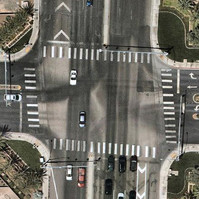 |
|
We usually think of crosswalks as the stripes going across the road to get pedestrians from one side to the other, but did you know that crosswalks can also be unmarked. Per Nevada Revised Statutes 484A.065, a legal crosswalk exists at all public street intersections whether marked or unmarked. However, all mid-block crosswalks must be marked. Clark County uses the “bar pattern” as shown to the left to mark crosswalks in accordance with the Manual on Uniform Traffic Control Devices, latest edition. |
At both marked and unmarked crosswalks, motorists must yield the right-of-way to pedestrians that are in the crosswalk when the pedestrian is upon the same half of the roadway as the motorist. Pedestrian crossing safety relies on the judgment exercised by both the pedestrians and drivers - therefore, educating pedestrians and drivers is essential.
Research indicates that on multi-lane streets with more than 12,000 vehicles per day, pedestrian collisions are higher at marked crosswalks versus unmarked crosswalks at uncontrolled locations especially on higher speed roadways. This appears to occur because pedestrians believe and expect a motorist to stop for a pedestrian in a crosswalk. However, drivers frequently fail to stop and a collision results. At all crosswalks, both marked and unmarked, it is the pedestrian’s responsibility to be cautious and alert before starting to cross the street.
For more information about crosswalks in Clark County, visit Clark County Public Works.
|
|

As we continue to grapple with the ongoing Covid-19 Pandemic, it is interesting to look back and see how our community fared and responded during the Influenza Epidemic of 1918. To set the stage - The US was in the midst of the first World War that would come to an end on November 11, 1918. Woodrow Wilson was President. Model T's were gaining in popularity. Radio broadcasts wouldn't come along for 2 more years. There were about 2,200 people living in Las Vegas; Goodsprings was home to about 700 people; and Moapa, Overton, and St. Thomas had a combined total of about 700 residents. The first cases of flu were observed in Kansas in early January. By August, the "Spanish" flu was a pandemic and 30 million people around the world would die in the next 6 months.
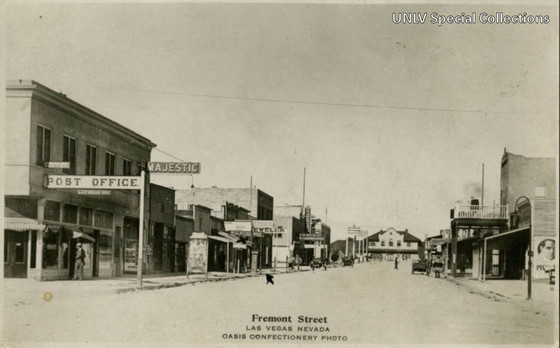 Although influenza had been spreading throughout the US since the beginning of the year, it's first appearance in Southern Nevada was noted in the September 28, 1918 edition of the weekly Las Vegas Age newspaper. It was called an "epidemic of influenza" but doctors were unsure if the was the “notorious ‘Spanish’ type.” Nine individuals were listed as being infected along with the entire family of Dr. RW Martin, who was the Clark County Health Officer. All were reported to be suffering “severely.”
 By the next week, the epidemic had reached “serious proportions” with 80 cases of influenza and 6 cases of influenza pneumonia. Following the “suggestion” from the US Surgeon General, the State Board of Health ordered the closure of all schools, theaters, and all places of public assemblage. The symptoms of the disease were listed as “headache, backache, and severe general depression accompanied by a rapid rise of temperature.” Castor oil, hot drinks, and Dover’s Powder (a combination of powder of Ipecacuanha, Opium, and potassium sulfate) were said to provide relief to sufferers. Residents were advised to stop work at once, go to bed, and call a physician as soon as they felt ill because “the only cases which have developed into the more serious pneumonia stage here have been those where the patient attempted carry on his work or usual pursuits.”
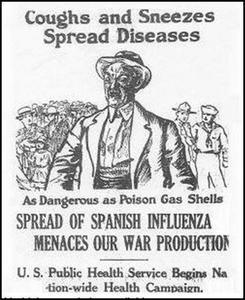 |
|
Although the cases of influenza had risen to 140 in the past two weeks, the October 19th edition of the paper reported that the epidemic was “on the decline” with an average of 5 new cases a day. It was noted that people were heeding the advice to stay home and take care of themselves. The hope was expressed that the “epidemic will soon wear itself out especially if people will be careful about exposing themselves to the infection and those who have had it are careful not to endanger others by their carelessness.” |
As of November 9, 1918, the influenza “situation” had become more serious with 12 deaths in the previous week. The Newspaper reported that caskets were in short supply so they were being made out of boards. “The physicians are overworked, the hospitals are full and CB Faust, the undertaker is confined to his bed.” The Board of City Commissioners (the modern day City Council) made an order requiring the wearing of “flu” masks and the order was being “very faithfully obeyed by the people.” Although it was unclear at that time whether masks were effective, it was mentioned that good results had been reported from other cities with masking orders. A section of the paper that was marked as “Cut this out and preserve it for future reference” listed many precautions to take including brushing your teeth, gargling your throat, wearing a mask, sterilizing dishes, and not standing close to someone while talking. The section included directions on how to make a mask, the best way to sterilize items, and 2 different types of gargling solutions. Residents were also cautioned "not take chances just because someone else does. They may have more personal resistance again influenza that you have.”
In the next issue, the Newspaper stated that there were up to 10 cases a day in the previous week, but at the end of the week it was down to 5 cases a day. A meeting was held that included representatives from the City and County Commissioners, the County Health Officer, the Red Cross, the Council of Defense, and the County Board of Education. They discussed the possibility of using the High School as an overflow for hospital patients if the need arose. The City Commission had also met and chose to continue the masking ordinance, but would no longer “employ officers to enforce it.” The District Court announced that it would be convening its fall session, but no juries would be seated due to the epidemic. |
|
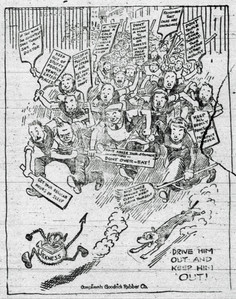 |
On November 23rd, the newspaper reported that the "Epidemic is on the Wane." There had been no deaths for several days and for the first time in recent weeks the morgue contained no dead on Thursday morning. Although all 6 of the deaths listed in the paper listed influenza pneumonia as the cause.
By the end of November, the situation had greatly improved and the schools were scheduled to open on December 9th. Another article announced that the Nevada State Prison was one of the few public institutions through the country that escaped the influenza. It was also reported that the Red Cross would be able to provide additional nurses to Nevada since conditions were improving in other states. However, within all of this good news was the news that the Chairman of the County Board, George Fayle, was in critical condition at his home in Goodsprings and there was little hope that he would recover.
In the next edition of the Newspaper, it was reported that George Fayle had passed away at his home in Goodsprings on December 9th. Mr. Fayle was undoubtedly the most noteworthy person that was lost to the epidemic in Southern Nevada. He had been an extremely successful businessman in both Jean and Goodsprings – in fact, he named the town of Jean after his wife in 1905. He developed the Yellow Pine Mining District, assisted the miners in selling their many tons of ore, and served as a County Commissioner for 8 years, the last two of which he was the Chairman. His eulogy in the paper was beautifully written and told the story of a man that was a highly respected member of the community that accomplished much in his life that was ended when he was only 37 years old.
 The December 28th edition of the Newspaper reported that there were few cases of influenza in Las Vegas and those that had been sick had a much milder case than those in the past. Moapa Valley had almost completely avoided the epidemic; however, a dance was held to welcome a local soldier home to St. Thomas. Almost all of the attendees ended up with influenza that they then passed on to their families. A letter was sent to the Commissioner of Health from 4 concerned citizens and was printed in the paper. They stated that there was “little precaution being taken to prevent the spread if the disease” and they were concerned that the schools would need to be closed during the winter.
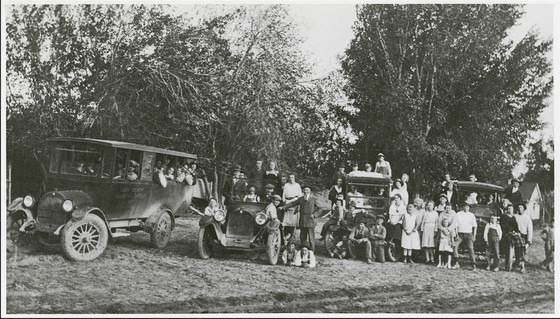 As 1919 began, the paper reported that the influenza situation was “very satisfactory.” In both Las Vegas and Moapa Valley the few cases that had recently been reported were mild and physicians were of the opinion that the influenza had “practically run its course here.” At the end of January, the Social Happenings section of the paper reported that the social life of Vegas was reviving with a number of “pleasant” events during the past week. Social life had been at a “low ebb” not only due to influenza, but also due to “war work” which was rapidly decreasing since the end of the war.
By February 15th no new cases of influenza had been reported to the Health Officer for several weeks, but the public was reminded that “every person should continue to use every means to keep in good physical condition.” Another prominent resident, Henry Squires, succumbed to the disease on February 17, 1919. He was described in his eulogy as a Las Vegas pioneer, property owner, successful business owner, and "western man."
Influenza continued to take its toll on cities in the US and around of the world with additional waves coming in the spring and summer of 1919. At the end of January 1920, approximately 50 new cases were reported in the Las Vegas area, but they were much milder than in the height of the pandemic and no deaths were reported. Over the next couple of years, many area deaths would be attributed to the fact that the person had never fully recovered from influenza.
Although the "Spanish" Flu Epidemic occurred over 100 years ago, there are many similarities to what we are experiencing today. The advice from medical professionals is very much the same - cleanliness, rest, social distancing, and trying to keep yourself from getting infected in the first place. Gatherings of people were prohibited and school and public facilities were closed. The wearing of masks was required although people didn't all agree on their effectiveness.
There are many lessons that can be gleaned from reflecting on the 1918 Pandemic, but the best one may be that in times of crisis our community has always pulled together and persevered.
|
|
|
|
|